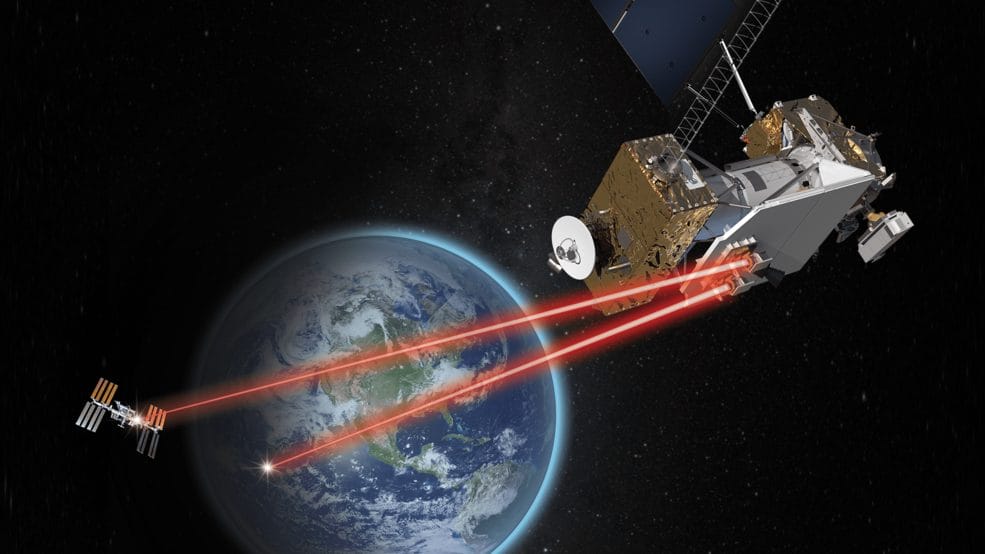Humanity is gearing up for an exciting return to the Moon, and this time, the plan is to stay there and use it as a launching pad for further space exploration. However, to make this ambitious goal a reality, we need to revolutionize our communication systems.
Currently, space exploration heavily relies on radio wave communications. While this method is effective, it has its limitations. Radio waves can only transmit a limited amount of data at a relatively fast speed. The demands of the Artemis Moon exploration program and future missions far exceed what radio waves can handle.
To address this challenge, NASA has been exploring the potential of optical communications, which utilize lasers for data transmission. Numerous projects and programs are underway, both on Earth and in space, to harness the power of lasers for interstellar communication.
One of the key advantages of laser communication systems over radio waves is their ability to transmit significantly larger volumes of data. Depending on the specific system used, optical communications can deliver anywhere from ten to 100 times more data than radio frequency.
In an unprecedented achievement, NASA recently announced the successful transmission of a 4K video from an airborne aircraft to the International Space Station (ISS) using an optical communication system. While the content of the video remains undisclosed, this milestone marks a crucial step towards equipping the Artemis program with the necessary tools for success.
The test was a collaborative effort between scientists from NASA’s Glenn Research Center in Cleveland and the Air Force Research Laboratory (AFRL). The primary objective was to develop new technology that enables live video coverage of astronauts during the Artemis missions. However, the journey of the video from the aircraft to the ISS was not as straightforward as one might assume.
The aircraft used for the test was a Pilatus PC-12, a renowned single-engine machine renowned for its capabilities. Equipped with a portable laser terminal, the Pilatus flew over Lake Erie in the North American Great Lakes region. From there, it directed a laser beam containing the video towards an optical ground station in Cleveland. The transmission then continued to NASA’s White Sands Test Facility in Las Cruces, New Mexico, before finally being beamed up to space.
It is worth noting that the laser beam was not directly aimed at the ISS. Instead, it was directed towards the Laser Communications Relay Demonstration (LCRD) satellite. This satellite, deployed in 2021, is currently positioned approximately 22,000 miles (35,400 km) away from Earth’s surface, significantly farther than the orbit of the ISS, which ranges from 230 to 285 miles (370 to 460 km).
This groundbreaking achievement in optical communication brings us one step closer to establishing a robust communication infrastructure for future lunar missions. With the ability to transmit large amounts of data, laser communications hold immense potential for revolutionizing space exploration and enabling unprecedented connectivity within our solar system.
[Photo: NASA Dave Ryan]
NASA Successfully Tests Laser Communication System on International Space Station
In a groundbreaking experiment, NASA has successfully tested a laser communication system on the International Space Station (ISS). The experiment involved using a laser beam to deliver and receive video, marking a significant advancement in space communication technology.
The signal was transmitted from Earth to the ISS, where it was received by the Integrated LCRD LEO User Modem and Amplifier Terminal (ILLUMA-T). This cutting-edge technology, which was attached to the ISS as part of the Japanese Experiment Module-Exposed Facility (JEM-EF), played a crucial role in the success of the experiment.
To enhance the effectiveness of the communication system, NASA also employed a new comms protocol called High-Rate Delay Tolerant Networking (HDTN). This protocol not only penetrates cloud coverage more effectively but also boasts four times faster speeds compared to current protocols.
Although the ILLUMA-T is no longer installed on the ISS, NASA remains committed to advancing this project. The space agency plans to continue streaming 4K video from the PC-12 aircraft to the heavens, demonstrating its dedication to pushing the boundaries of space communication technology.
The primary goal of this project is to provide the necessary technology to support the Artemis program. This includes equipping astronauts with the capability to transmit vast amounts of research data and engage in high-definition video conferences with individuals back on Earth.
As of now, the second mission of the Artemis program, which will involve humans orbiting the Moon, is scheduled to depart in 2025. Following this, Mission III, which will see astronauts landing on the lunar surface, is planned for departure one year later.
This successful experiment marks a significant milestone in space communication technology. NASA’s dedication to advancing communication systems will undoubtedly contribute to the success of future missions and pave the way for further exploration beyond Earth’s atmosphere.







